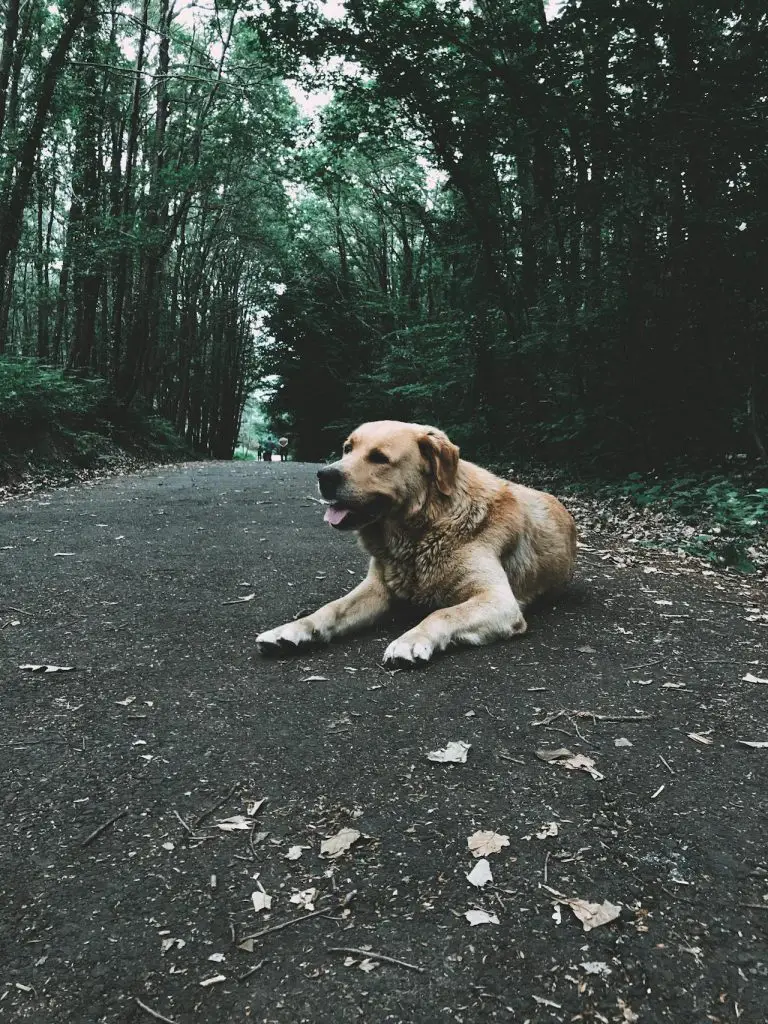
You spend hours exercising and playing with your dog, yet the minute you settle in for some quality time together, they snuggle up and snooze the day away. Despite their seemingly boundless energy, dogs sleep an average of 12 to 14 hours a day. But is it normal for your furry friend to sleep this much? And what if their snoozing patterns have changed recently? Perhaps it’s related to their age, breed, or even a medical issue. To better understand your dog’s shut-eye habits, let’s explore the factors that influence their sleep patterns – and uncover potential red flags.
Table of Contents
Normal Sleep Patterns in Dogs
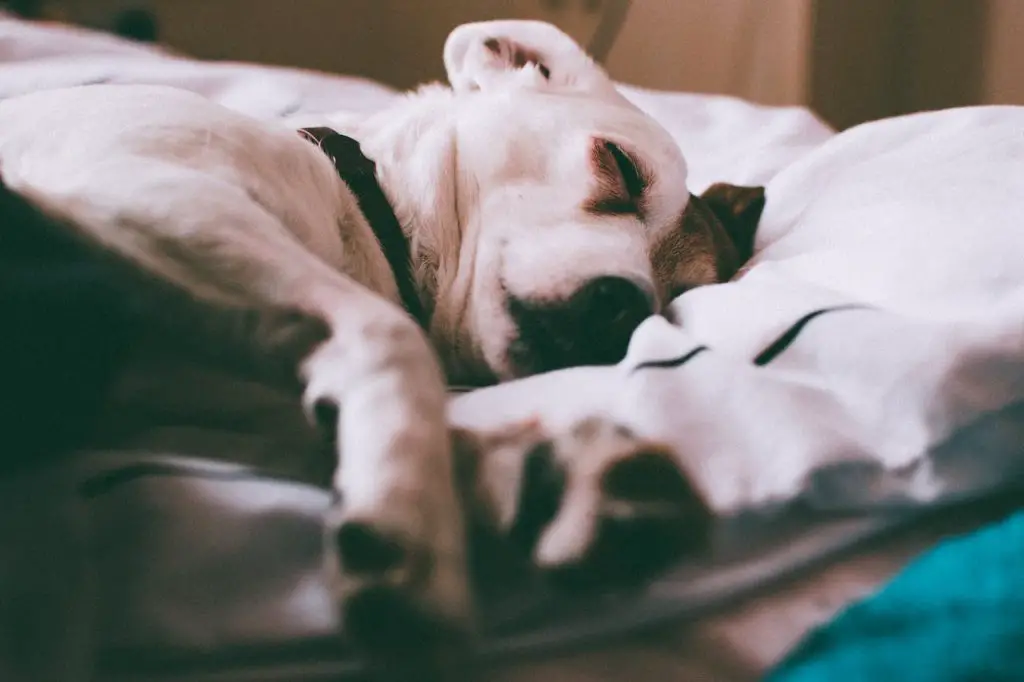
Dogs typically spend 12-14 hours per day snoozing, with their sleep patterns divided into short periods of wakefulness and longer stretches of deep, restorative sleep.
You may wonder what’s behind this unique sleep pattern. It all comes down to their sleep cycles.
Unlike humans, who experience long, uninterrupted periods of sleep, dogs have shorter sleep cycles that last around 10-15 minutes.
These cycles are divided into different stages, including REM and non-REM sleep, just like humans. However, dogs spend more time in the lighter stages of sleep, which allows them to wake up quickly and respond to their environment.
This post contains affiliate links. However all the information provided on this site are my own honest opinions. See more in Disclaimer.
As a result, dogs have a shorter sleep duration than humans, but they make up for it by sleeping more frequently throughout the day.
This polyphasic sleep pattern is thought to be an adaptation to their wild ancestors, who needed to be able to rest while still being vigilant for predators.
Understanding your dog’s normal sleep patterns can help you better appreciate their unique needs and behaviors.
By recognizing that your dog is simply following their natural instincts, you can provide them with the rest and relaxation they need to thrive.
Factors Affecting Canine Sleep
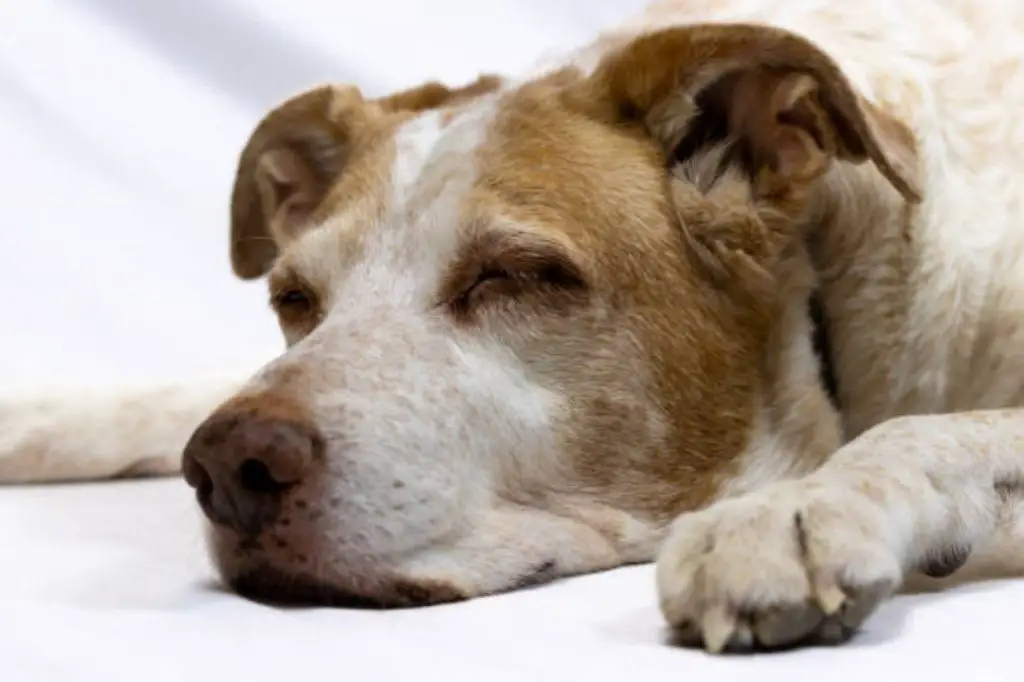
Several factors, including age, breed, and health status, can greatly impact the duration and quality of your canine companion’s sleep.
As your dog grows older, their sleep duration and frequency may change.
Senior dogs, for instance, tend to sleep more during the day and have less restorative sleep at night, which can be linked to declining physical and cognitive abilities.
Your dog’s breed can also influence their sleep patterns. Larger breeds, such as Great Danes and Mastiffs, tend to sleep more than smaller breeds, like Chihuahuas and Poodles, due to their distinct physical characteristics and activity levels.
Health issues can also considerably affect your dog’s sleep quality and duration.
Dogs with chronic pain, arthritis, or sleep disorders often experience fragmented sleep, leading to excessive daytime sleepiness. Additionally, certain medications can influence your dog’s sleep patterns.
Understanding the factors that affect your dog’s sleep can help you identify potential health issues and provide them with the best possible care.
Boredom and Lack of Stimulation
While factors such as age, breed, and health status can greatly impact your dog’s sleep patterns, it’s also important to take into account the role of environmental factors, specifically the effects of boredom and lack of stimulation, which can substantially influence the quality and duration of your dog’s sleep.
If your dog isn’t getting enough mental stimulation or physical exercise, they may resort to excessive sleeping as a coping mechanism.
This can lead to a vicious cycle of boredom and lethargy, as a lack of activity can further exacerbate the desire to sleep.
To address this, it’s essential to guarantee your dog is getting enough mental and physical stimulation throughout the day.
Engage your dog in activities that challenge their mind, such as puzzle toys or obedience training, and prioritize regular exercise, such as walks, runs, or playtime.
This will help regulate their sleep patterns and prevent excessive sleeping driven by boredom.
By providing adequate mental and physical stimulation, you can help your dog lead a more balanced and active life, reducing the likelihood of excessive sleeping and promoting overall well-being.
Regularly reassess your dog’s activities and adjust as needed to prevent boredom.
Medical Conditions and Sleep
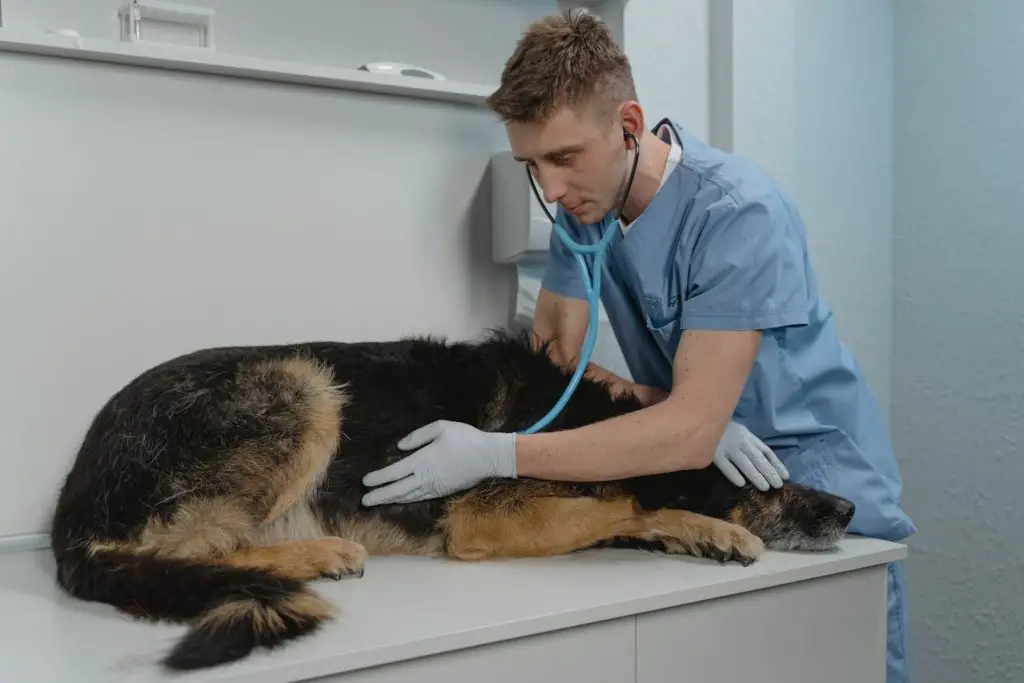
A significant number of canine medical conditions, ranging from chronic pain and arthritis to sleep disorders and neurological diseases, can disrupt your dog’s normal sleep patterns, leading to excessive sleeping or difficulty sleeping.
If you suspect that your dog’s sleep patterns are being affected by a medical condition, it is crucial to schedule a medical evaluation with your veterinarian.
| Medical Condition | Impact on Sleep |
|---|---|
| Chronic Pain | Increased sleeping due to pain management |
| Sleep Disorders | Difficulty sleeping or excessive sleeping |
| Arthritis | Increased sleeping due to joint pain and discomfort |
| Neurological Diseases | Disrupted sleep patterns due to damage to the brain |
During the medical evaluation, your veterinarian will perform a physical examination, take a complete medical history, and may conduct diagnostic tests to determine the underlying cause of your dog’s sleep disturbance.
If a medical condition is diagnosed, your veterinarian will work with you to develop a treatment plan to manage the condition and improve your dog’s sleep quality.
By addressing the underlying medical condition, you can help your dog return to a normal sleep pattern and improve their overall quality of life.
Age-Related Sleep Changes

Your dog’s sleep patterns change considerably as they age, with older dogs typically sleeping more during the day and experiencing a shift in their normal sleep-wake cycles.
As your dog matures from a puppy to an adult, their sleep patterns adjust to their changing physical and mental needs.
Puppies, for instance, tend to sleep a lot, often 18-20 hours a day, as their developing brains and bodies require plenty of rest.
As your dog ages, their sleep patterns become more similar to those of humans, with most adult dogs sleeping 12-14 hours a day.
However, senior dogs often experience a significant increase in sleep duration, which can be attributed to a decline in physical and cognitive abilities.
This increased sleepiness is sometimes referred to as senior lethargy. Factors contributing to this age-related change include reduced physical activity, potential health issues, and decreased sensory perception.
You may also notice changes in the quality of their sleep, such as more frequent nighttime awakenings or difficulties settling down.
These changes are a natural part of the aging process, and it’s important to adjust your expectations and provide your older dog with a comfortable and supportive sleep environment.
Breed-Specific Sleep Patterns
Sleep patterns in dogs can vary considerably depending on their breed, with certain breeds sleeping more or less than others due to factors such as their original purpose, body type, and energy level.
When you understand your dog’s breed characteristics, you’ll better grasp their sleep needs. For instance, larger breeds like Mastiffs and Saint Bernards tend to sleep more, often up to 16-18 hours a day.
This is because their massive bodies require more rest to recover from even moderate physical activity.
In contrast, smaller breeds like Chihuahuas and Poodles sleep less, typically around 12-14 hours a day, as they’ve higher metabolisms and require more frequent feedings and attention.
You’ll also notice variations in sleep duration based on your dog’s original purpose.
Working breeds, such as Border Collies and German Shepherds, tend to sleep less than non-working breeds, as they’re bred for high energy and focus.
Understanding your dog’s breed-specific sleep patterns helps you tailor your expectations and provide the best care.
By acknowledging these breed-related differences, you can guarantee your dog gets the rest they need to stay happy and healthy.
Furthermore, by monitoring their sleep patterns, you can detect any potential health issues early on.
Changes in Environment or Routine
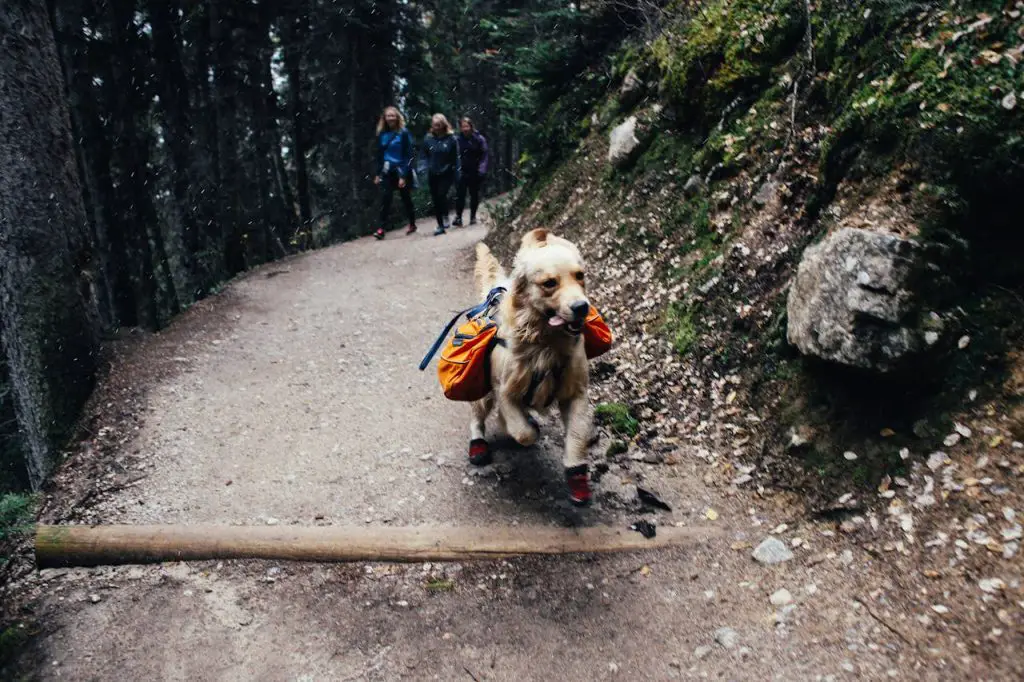
You’ve probably noticed that your dog’s sleep patterns can be affected by changes in their environment or routine.
When you move to a new home or change your work schedule, your dog must adapt to these changes, which can impact the quality and quantity of their sleep.
Adapting to New Spaces

Dogs often require time to adjust to new environments or changes in their routine, which can lead to increased sleepiness as they expend mental energy adapting to novel stimuli.
When you move to a new home, your dog may feel the effects of moving stress, which can cause them to become more lethargic than usual.
This is because they’re processing new sights, sounds, and smells, which can be overwhelming. New smells, in particular, can be a significant source of stress for dogs, as their sense of smell is much more developed than humans’.
As your dog navigates this new space, they’ll need time to become familiar with their surroundings. This process can be mentally exhausting, leading to increased sleepiness.
You may notice your dog sleeping more during the day or having difficulty settling down at night.
Be patient with your dog during this adjustment period, and provide them with a familiar and comfortable space to retreat to when needed.
With time, your dog will adjust to their new environment, and their sleep patterns should return to normal.
Effects of Weather Changes
Just as changes in your dog’s physical environment can impact their sleep patterns, shifts in the weather can also affect their behavior and increase their sleepiness.
You may notice that your dog becomes more sluggish during certain times of the year or in response to specific weather conditions.
This phenomenon is known as weather sensitivity, and it’s more common than you think.
Some dogs may experience seasonal lethargy, where they become less active and sleep more during the winter months when temperatures drop and daylight hours are shorter.
On the other hand, hot and humid weather can also cause your dog to sleep more, as they try to conserve energy and regulate their body temperature.
Changes in air pressure, wind, and precipitation can also impact your dog’s behavior and increase their sleepiness.
It’s vital to recognize your dog’s individual response to weather changes and adjust their care accordingly.
Altering Daily Schedules
Changes in a dog’s daily schedule, such as shifts in meal times, exercise routines, or sleep patterns, can greatly impact their overall sleep quality and duration.
When you alter your dog’s daily routines, you may notice changes in their sleep patterns.
For instance, if you start taking your dog for longer walks in the morning, they may sleep more soundly at night.
Conversely, if you’re working longer hours and leaving your dog alone for extended periods, they may sleep more during the day.
Establishing a consistent daily routine is vital for maintaining good sleep hygiene in dogs. Irregular schedules can disrupt their natural sleep-wake cycles, leading to excessive sleeping or insomnia.
By sticking to a regular routine, you can help regulate your dog’s sleep patterns and guarantee they’re getting the restful sleep they need.
Be mindful of changes in your work schedule, travel plans, or other events that may impact your dog’s daily routine, and adjust their schedule accordingly to minimize disruptions to their sleep.
Frequent Questions
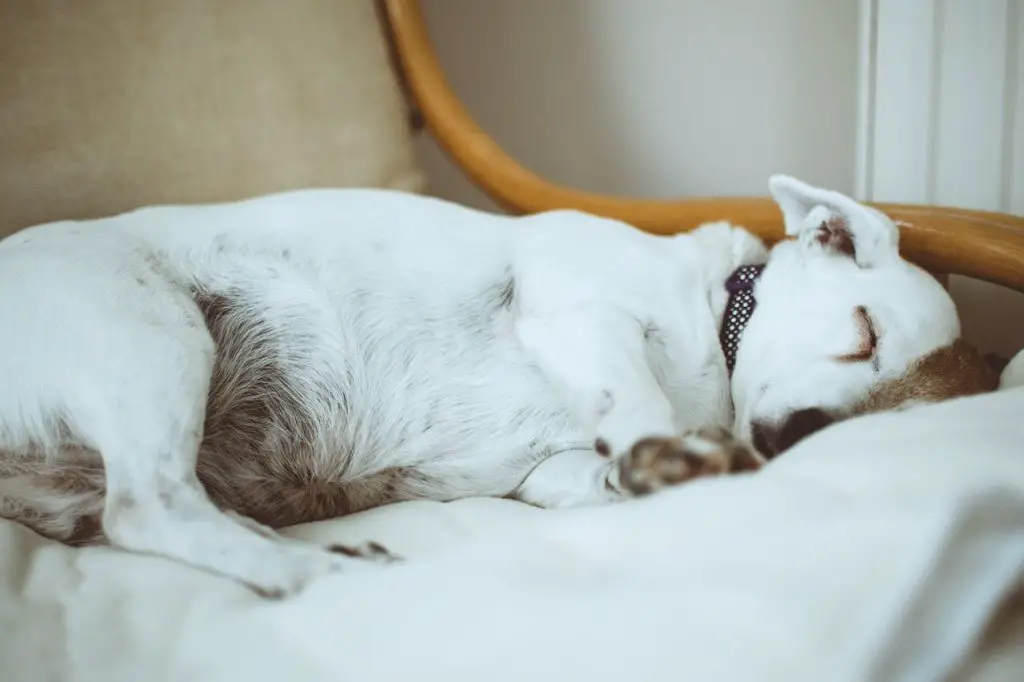
You can wake your dog from a deep sleep, but it’s essential to understand their sleep cycles to avoid startling them. Use gentle waking techniques, such as quietly calling their name or lightly touching their fur.
Like Morpheus’ gentle hum, your dog’s snores may lull you into a false sense of security, but it is crucial to investigate snoring causes. Breed differences, such as brachycephalic breeds, can increase snoring likelihood due to narrower airways.
You may wonder if your dog dreams when twitching and moving during sleep. Research suggests that dogs, like humans, experience various sleep cycles, including REM sleep, where dreaming behaviors such as twitching and moving occur, indicating brain activity.
When weighing bedtime benefits, consider your own sleep quality and whether sharing space with your dog aligns with your sleep goals. If you don’t mind disruptions, inviting your dog onto your bed can strengthen your bond.
You’re wondering if your dog’s excessive sleeping can lead to lethargy. Actually, lethargy causes are often underlying medical issues, not just sleeping too much. Monitor your dog’s behavior and consult a vet to rule out any health problems.
Final Thoughts
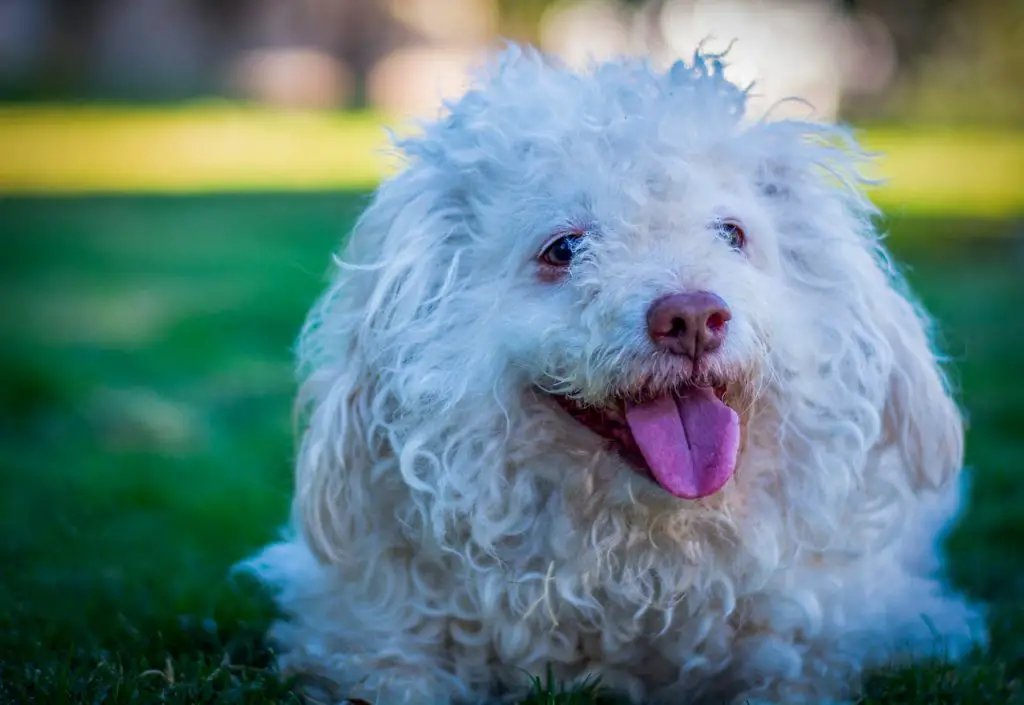
Like a well-oiled machine, your dog’s sleep patterns are influenced by a complex interplay of factors, including age, breed, environment, and health.
Understanding these factors is key to ensuring your dog’s well-being.
By recognizing what’s driving their sleepiness, you can address potential health concerns and make informed decisions to promote a healthy balance of rest and activity.
Monitoring your dog’s sleep patterns is essential to keeping them happy, healthy, and thriving.




